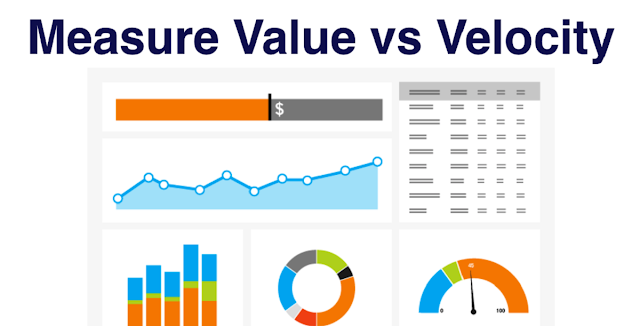Velocity is a simple way to measure the rate at
which Scrum teams deliver business value. What project managers must keep in
mind about Agile Velocity will be discussed here. Before, we move
further; let’s understand what Velocity is?
Agile Velocity:
In short and simple terms, Agile Velocity can be considered as the amount of work your team
does in a particular period of time. This can be measured in person hours,
number of tasks completed, points collected, or any other units of measurement
that can be used for work estimation.
Teams work constantly on the tasks that are on
their plate. Velocity is measured as
per the number of tasks done per day. The average of these daily velocities
over the course of week can be used to estimate the work, a team can do in the
long run.
It is equally useful in Scrum. All digital
projects work towards a definite schedule. Velocity in Scrum is referred to as
total of person hours completed. Knowing velocity, team members can calculate
the amount of hours required to complete a project.
The time calculated to complete a project in
this manner is mostly accurate.
How is Agile Velocity beneficial?
Teams using Agile usually focus on two levels of
completion: either incomplete or complete i.e 0% done or 100% done. But,
sometimes, the task is only 70 - 80% complete. Hence, it is not considered in
velocity.
You can plan the team’s velocity at their one
and half of team’s total available time. Measuring the Agile Velocity can aid into effective visibility of project
progress and status. It is believed that this will stabilize the project life
in case the team planning or amount of hours taken to complete the project
varies. It makes project planning easy.
Those new to Agile Software Development
can select the initial velocity using available information. As days pass by,
they will know how velocity can be measured and adjusted.
Velocity can simplify and accelerate the entire
project planning and estimation, status tracking and reporting process.
How to track Agile Velocity?
Velocity charts are used to track the Agile Velocity.
These are used by most of the project management platforms. These charts assist
in visualizing the amount of value delivered. It also enables you to predict
the amount of work done by the team in different phases.
So, does this mean Maximum Velocity = Maximum
Productivity? Well, let’s check the validity of this statement:
Does Maximum Velocity = Maximum Productivity?
Maximizing Velocity may sometimes mean
minimizing productivity. Forcefully trying to increase velocity can lead to
less productivity. The aim is to have accurate Agile Velocity not
maximum velocity.
There are various tools used to measure the
velocity accuracy. These are also used to have visibility across all of your
teams in one place. You can reuse the velocity data to measure the health of
your product.
In a nutshell:
To know more about Agile Velocity, You
can get in touch with us at Lean Agile Training. Knowing it properly will help
you achieve more. Master Scrum and Agile and bring your company to the next
level.

